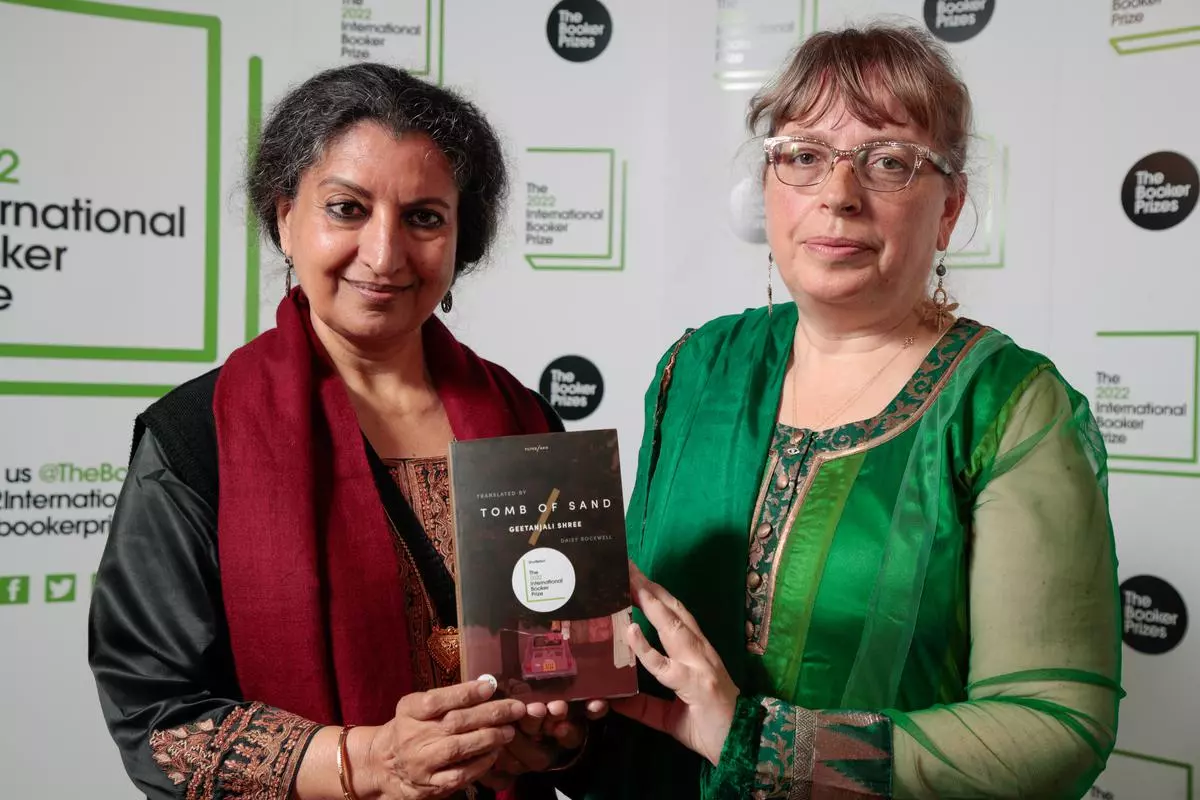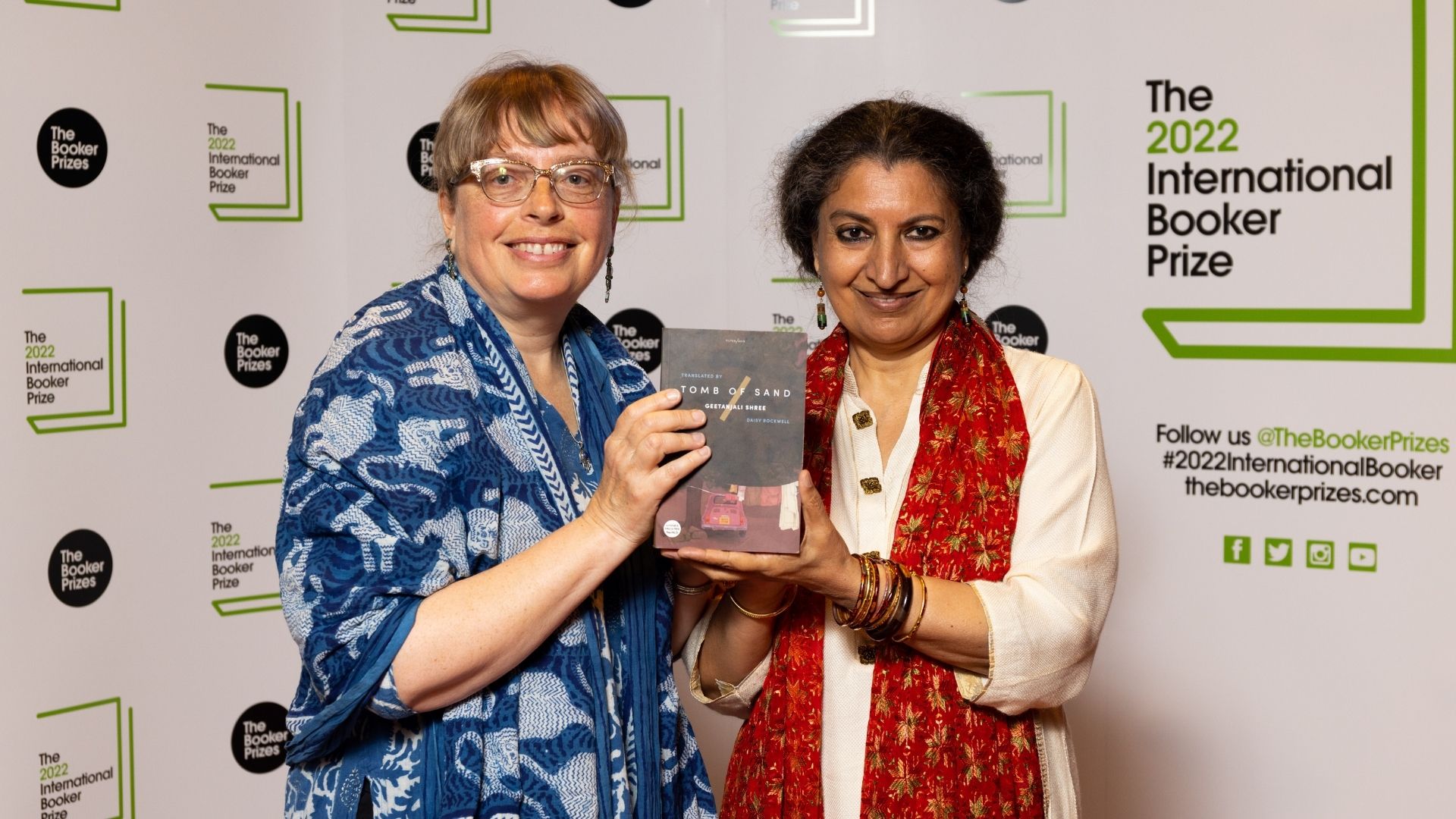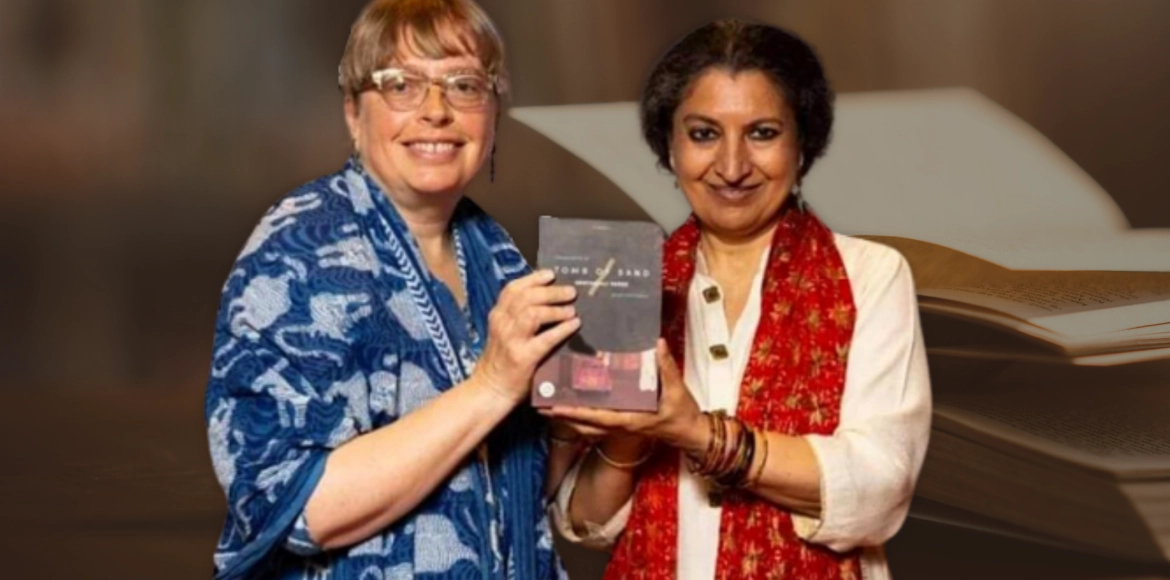Indian author Geetanjali Shree’s Hindi novel Ret Samadhi, translated into English as Tomb of Sand by Daisy Rockwell recently winning the prestigious International Booker Prize has resurfaced conversations on the importance of vernacular language writing and its translations, in India. This comes at a crucial point when many publishers remain reluctant to focus on translations citing that they may not be palatable to the international audience and thus, are deemed not to be too valuable or commercially viable.
A recent study commissioned by the British Council and carried out by the Art X Company on the Indian literature and publishing sector found that India’s long-held tradition of writing in English has, to some extent, contributed to limiting the market for vernacular literature in translation.
Indian writing in English which is often created with the international audience in mind is more accessible to foreign audiences as compared to translations of Indian language writings, which are strongly rooted in local contexts, humor, and concerns. The priority given to Indian writing in English has led to the overshadowing of literature in translation to its detriment.

But many translators are realising the importance of translations, especially that of translating not only classics but also contemporary writers. For notable translator Arunava Sinha, non-English fiction from India is much closer to the lives of the people it features. “I find non-English fiction from India much less inclined to grandstand than English fiction. The writers do not insert themselves as performers. English fiction somehow draws more attention to the texture of the prose,” he says.
For female authors who have little to no access to the English medium, writing in their mother tongue is almost a tool to carve a space for themselves. Dr. Neeraja, who writes in Marathi feels that regional languages help in the better portrayal of women’s issues. Instead of generalised or cerebral takes, author Lakshmi Holmström argues that the regional feminist writings stem from personal, felt experiences, whether be it Bama’s Dalit politics or Salma’s insights into the world of Muslim women.
In 2016, 33.8 percent of books translated into English were authored by women, compared to 63.8 percent by men. A systemic bias exists against women in every step of writing and publishing, leading to lesser women authors being recognised. Translator Daisy Rockwell confirms that this also extends to translation. She says, “Women are encouraged to write less, are mentored less, are published less, are translated less”
These writings teach us something different from the school curriculum or what’s broadcasted in the mainstream. They teach us about the lived realities of people in the margins. For female authors, who are often in the crossovers of different identities, these works help to understand intersectionality better.
In an interview, Pancha Kumari Pariyar, a Dalit writer from Nepal says, “I understood that the Sarkini (Dalit woman) was less powerful than a disabled Dalit man. Before…I had not thought about the difference in gender within our community, I just saw us as a united group who suffered together. But I was wrong. There is a hierarchy, and it became clear to me that it wasn’t enough for me to just write for my people, I had to write for Dalit women.”
While such experiences may be neglected in the name of lacking “commercial potential”, sometimes, a ground-breaking work comes along, which shatters existing beliefs about how a piece of literature should be. Geetanjali Shree’s Ret Samadhi is one such seminal work that puts India-Pakistan’s partition in the backdrop while telling the story of an octogenarian central figure of a family.

The book, originally written in Hindi, was said to be the most untranslatable work of Geetanjali Shree due to its inventive use of language. Regional languages often open up avenues to play with words in ways different from those recognised or established in the English literary canon. This is evident from the use of different meters and rhyme schemes in poetry, depending on the language.
Sinha explains this in a straightforward way in a session titled ‘Why translations of regional Indian literature are the best reads?’ “They (regional writers) don’t care for technique, they haven’t got Master of Fine Art degrees, they don’t care for impressing anyone and they don’t write for a western market. It is perhaps full of flaws, angularity and full of strange construction,” Sinha believes this leads to the most authentic form of writing.
However, all writings don’t get their due credit and recognition. Prolific editor and translator Mini Krishnan who joined Oxford University Press in 2001, and looks after the wing of women and Dalit writings confesses that it was only after a few years of publishing Dalit literature translations that it sparked an increase in phone calls and letters from those interested in attempting such translations. It took years of convincing publishers and others involved to get on the bandwagon. Even now, the literature translation pathway is not seamless with her attempt to get a bigger publisher for stories of iconic Malayalam author K. Saraswathi Amma not paying off.
Also read: We Need More Angry Women In Fiction: ‘Female’ Rage And Her Inner Worlds
The choice to translate Ret Samadhi written by Geetanjali Shree was a conscious decision by Rockwell who was fed up of dealing with the male gaze after years of translating male authors. The book was published by a fairly new publishing house, Tilted Axis Press, founded by Deborah Smith using her prize money from her own International Booker prize award for the translation of Han Kang’s ‘The Vegetarian‘. The Press is committed to bringing Asian stories and “fresh, exciting voices from places like Bangkok and Kolkata, Seoul and Jakarta: mainly translations, mainly women”
India is a diverse country with a multitude of languages. Officially, approximately 780 languages (down from 1652 languages counted in 1961) co-exist in India out of which, 22 are formally recognised by the Indian Constitution. With the Sahitya Academy awarding translation prizes to only writings in these listed 22 languages, other languages are further pushed to the boundaries.
In 2016, 33.8 percent of books translated into English were authored by women, compared to 63.8 percent by men. A systemic bias exists against women in every step of writing and publishing, leading to lesser women authors being recognised. Translator Daisy Rockwell confirms that this also extends to translation. She says, “Women are encouraged to write less, are mentored less, are published less, are translated less.”

The choice to translate Ret Samadhi written by Geetanjali Shree was a conscious decision by Rockwell who was fed up of dealing with the male gaze after years of translating male authors. The book was published by a fairly new publishing house, Tilted Axis Press, founded by Deborah Smith using her prize money from her own International Booker prize award for the translation of Han Kang’s ‘The Vegetarian‘. The Press is committed to bringing Asian stories and “fresh, exciting voices from places like Bangkok and Kolkata, Seoul and Jakarta: mainly translations, mainly women”.
The media attention and awards that regional books and authors are receiving have been of large help to spotlight these incredible, compelling stories. Translation-specific programs further help to build a thriving community of translators writing in different languages. Nowadays, literary awards also have an additional category dedicated to literature translated into English, whether it be the International Booker Prize which complements the Man Booker Prize, or an award on a homegrown basis like the Crossword Book Awards. Notable publishers like HarperCollins are also playing an active role in bringing out stories translated from different languages of the Indian subcontinent.
In a 2012 The Guardian article, Belinda Webb criticises the focus of literary feminism on works of middle class women writers, but not on working class women like Ethel Carnie Holdsworth, who worked in a textiles factory from the early age of 11. Webb calls out feminists who cry foul inequalities between men and women, but fail to address inequalities between women, due to intersecting identities of their caste and communities.
If a woman writer from England writing in English can get ignored in the field of literature where male authors are usually the gatekeepers, what about women from the Global South writing in their own tongue? They are even more inaccessible from their place, position and use of language. Webb talks about Holdsworth dying out of exhaustion later in her life.

People recognise those authors whose works are translated and garner a certain kind of fame. But one must wonder how many women have slid down into the shadows, including K Saraswathi Amma, whose contributions were largely neglected during her living years and only in recent years, have been recognised. Translations of these women who use their languages to mark their presence are necessary to understand marginal stories that have been sidelined for a long time.
As Geetanjali Shree writes in her novel, “Women are stories in themselves, full of stirrings and whisperings that float on the wind, that bend with each blade of grass.”
Also read: Mental Health, Gender And Survival: Engaging With Sylvia Plath’s Literary Universe
Featured Image Source: CitySpidey
About the author(s)
Shuvangi is an independent writer and researcher based in Kathmandu, Nepal




